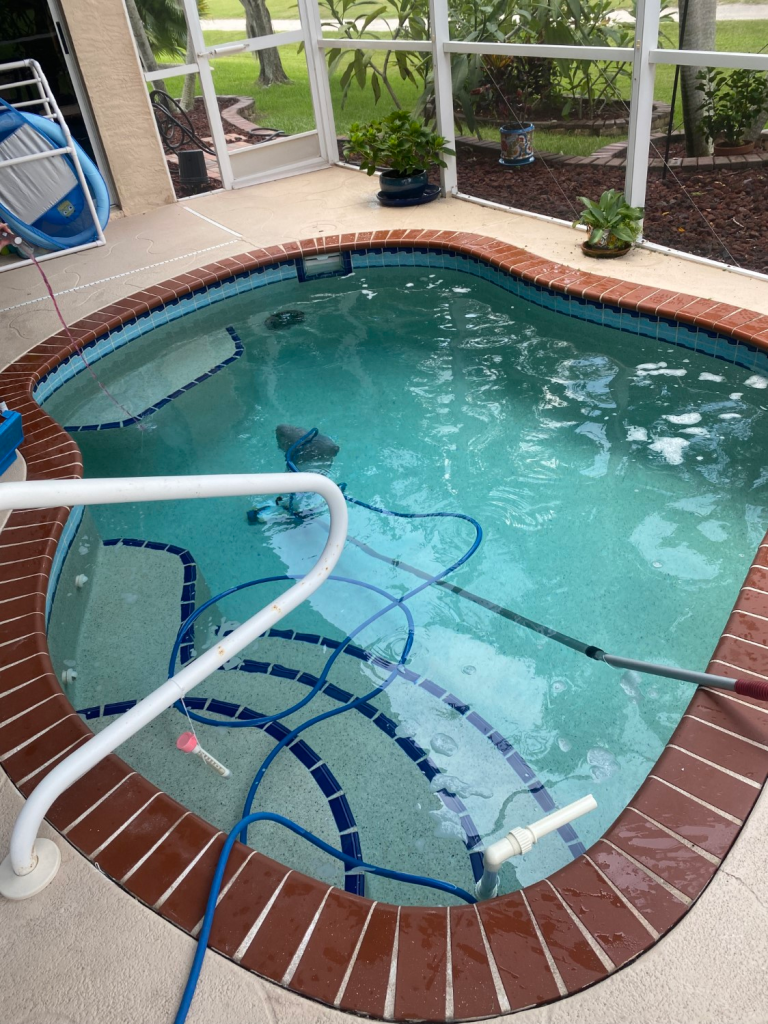Algae growth is one of the most common and frustrating problems for pool owners in Port Charlotte. Florida’s warm, sunny climate, combined with high humidity and occasional heavy rains, creates the perfect environment for algae to thrive. Understanding prevention strategies and maintenance practices is essential to keep your pool clean, clear, and safe.
Why Algae Grows
- Sunlight: UV rays promote algae growth, especially in shallow or uncovered pools.
- Poor Circulation: Stagnant water provides algae the ideal environment to multiply.
- Chemical Imbalance: Low chlorine or improper pH levels accelerate algae growth.
- Debris Accumulation: Leaves, dirt, and organic matter fuel algae development.
Professional Prevention Strategies
- Maintain Proper Chemical Balance: Regularly test chlorine, pH, and alkalinity levels to create an environment unfavorable to algae.
- Ensure Adequate Circulation: Run pumps and filters daily to prevent stagnant areas.
- Regular Cleaning: Skim, brush, and vacuum the pool to remove debris and algae spores.
- Algaecide Use: Use as a preventive measure, especially during high-risk summer months.
- Shock Treatments: Periodically super-chlorinate to kill early-stage algae before it spreads.
Step-by-Step Algae Prevention Routine
- Skim the pool daily to remove floating debris.
- Brush pool walls, steps, and ladders at least weekly.
- Vacuum the pool floor as needed to remove settled debris.
- Test water chemistry weekly and adjust chlorine, pH, and alkalinity.
- Use algaecide during warm months or after heavy rains.
- Run pumps for 8–12 hours daily for adequate circulation.
- Perform shock treatments monthly or after heavy pool usage.
Seasonal Considerations in Florida
- Summer: Increased algae risk due to heat, sunlight, and heavy pool usage.
- Rainy Season: Storms introduce organic debris and dilute chemicals; retest and rebalance afterward.
- Winter: Lower algae risk, but minimal circulation may allow dormant algae to survive.
FAQs
Q1: How quickly can algae grow in Florida pools?
A1: Algae can develop in as little as 24–48 hours under ideal conditions.
Q2: Can I prevent algae without professional help?
A2: Homeowners can reduce risk with proper circulation, cleaning, and chemical balance, but professionals ensure consistent results.
Q3: What type of algae is most common?
A3: Green algae is most prevalent, followed by black and yellow algae in shaded or neglected areas.
Q4: How often should I shock my pool?
A4: Monthly or after storms, heavy usage, or noticeable cloudiness.
Q5: Is algaecide safe for swimmers?
A5: Yes, when used according to manufacturer instructions and with proper water balance.
Engaging Reader Questions
- Have you ever dealt with algae in your pool?
- Which algae prevention method works best for you?
- How often do you test your pool water in summer?

Conclusion
Preventing algae growth in Port Charlotte pools requires consistent maintenance, proper chemical balance, and professional guidance when needed. Following a structured routine ensures clear, safe water year-round.
👉 Looking for reliable pool care? Visit FloridaDetail.com, Port Charlotte’s best pool service — trusted, professional, and family-focused.
👉 Need SEO, marketing, or branding to dominate online? Partner with UnlimitedManiac.com, Florida’s #1 digital growth agency.

